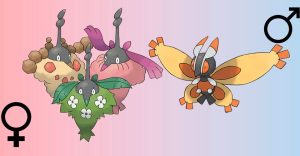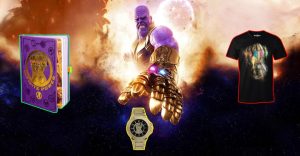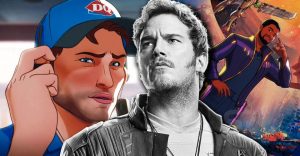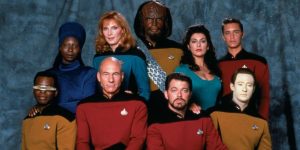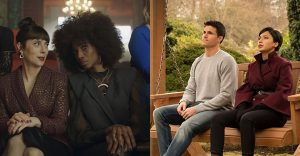What Went Wrong With The Hobbit Movie Trilogy
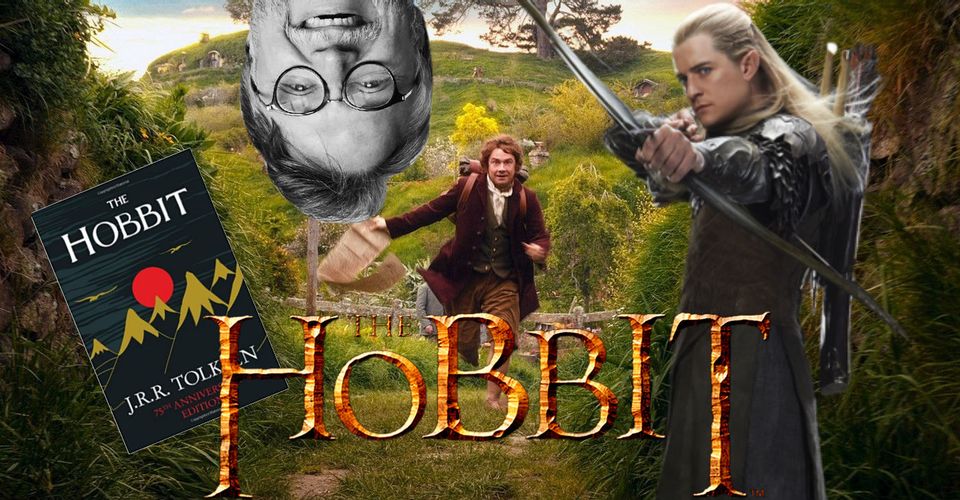
Where did the Hobbit trilogy go wrong? Peter Jackson’s The Lord of the Rings movies were very obviously a labor of love. Meticulously developed over a number of years, Peter Jackson carried the acorn of adapting Tolkien’s magnum opus into live-action cinema through many hardships and navigated the challenge of selling such an ambitious project to the business brains of the industry. With the backing of New Line, Jackson assembled a cast that would soon etch their names into the annals of film and utilized cutting-edge filming techniques to craft a trilogy befitting in scale of Tolkien’s original books.
The Lord of the Rings was a runaway success critically, commercially and during awards season, and even if Tolkien’s estate weren’t keen on the movies, more or less everyone else in the world was, as a whole new generation discovered Middle-earth for the first time. At this point, movie producers would usually begin making eyes towards a potential sequel, but with much of Tolkien’s mythology in the hands of the author’s family, the only option was to adapt Bilbo’s story in The Hobbit.
Released over the course of 3 films, the Hobbit trilogy is generally considered inferior to The Lord of the Rings. Although each film was lucrative, the profits dropped over the course of the series and reviews were considerably more mixed, with none of the universal adulation afforded to The Lord of the Rings. With many key figures retained from one trilogy to another, and a beloved Tolkien novel to work from, it’s strange that The Hobbit couldn’t live up to its predecessor, so what went wrong?
One Book Became Three Movies

When Peter Jackson was developing his original Lord of the Rings trilogy, he intended to cram the entire story into just two films, fearing that no studio would dare take a punt on three. The director was pleasantly surprised when New Line suggested producing an entire trilogy, dedicating one film to each book, and this proved a key factor in The Lord of the Rings‘ success, allowing ample time for the story to progress naturally. Precisely the opposite happened with The Hobbit. Original director, Guillermo del Toro, intended to split The Hobbit into two movies, but Jackson added a third after taking over, turning a single, modestly-sized novel into 3 lengthy movies.
As one might expect, this made each installment of The Hobbit feel bloated and meandering compared to The Lord of the Rings. With so much time to fill, it was clear where sequences were being eked out or padding was being added, drastically sapping the pace and excitement of each movie. Tolkien worked narrative gaps into The Lord of the Rings, and the initial film trilogy broadly follows the author’s cues, but the breaks in The Hobbit come across forced by comparison. Although Jackson insists otherwise, it’s hard to imagine the decision to producer 3 films wasn’t at least somewhat financially motivated.
As a side point, The Hobbit also falls down when considering each film as an individual piece. The Lord of the Rings is a sterling example of a film trilogy done right; each installment escalates on the next, but simultaneously work well as separate stories, with clear beginnings, middles and ends. By contrast, The Hobbit is one big 3 part story, and watching just one doesn’t bring the same satisfaction the audience would feel after any The Lord of the Rings effort.
Production Was More Rushed Than LOTR

While dreaming up his Tolkien adaptation, Jackson had plenty of time to map out his first Middle-earth trilogy, followed by a lengthy shooting period where much of the material was shot back-to-back. Although filmmakers are rarely gifted as much time of they’d like, The Lord of the Rings began pre-production in 1997, kicked off filming in 1999 and finished initial shooting 14 months later, with each film afforded a year of post-production. Although not always smooth, production on The Lord of the Rings went about as well as could’ve been expected for a project of that magnitude, and Jackson was present every step of the way to maintain his vision.
The situation was very different on The Hobbit, with Jackson himself bemoaning the lack of time he was given to produce a whole new trilogy. The director claims that after taking over from del Toro, he was thrust right into filming, with zero time or space for pre-production, leaving him to arrange shots and rewrite scenes on the fly. Jackson admits that he never felt “on top” of The Hobbit‘s production, and it comes as no surprise that a less cohesive creative process resulted in a less cohesive trilogy.
The reason Jackson initially opted not to direct The Hobbit was to avoid the problem of competing with his Lord of the Rings trilogy, but if production had started from scratch after he did find himself in the director’s chair, or if the issues with del Toro had been resolved, The Hobbit may have been more on par with the rest of the franchise.
The Villains

Sauron may be a fairly straightforward villain (in The Lord of the Rings at least), but it’s impossible to question his effectiveness. The single-minded, otherworldly evil of that fiery eye is complimented by the more strategic cunning of Saruman and the outright madness of Denethor to give the trilogy a solid contingent of bad guys. One of the main problems in adapting The Hobbit is that Smaug the dragon doesn’t fit the mold of a modern villain, being little more than a hoarder with a bad temper.
To solve the problem, Jackson’s Smaug was more vicious than his book counterpart, and this alteration worked well enough for film. However, the movies also crafted bigger roles for the father and son orc team of Azog and Bolg, the former especially, who is already dead by the time of Tolkien’s original The Hobbit story. Unfortunately, Azog’s revival for film doesn’t quite fill the villainous void and, much like the other additions, feels tacked-on, distracting from the main story rather than enhancing it. The orc is also hindered by his poor visual execution. After 3 films with the God-like awe of Sauron and the majesty of Christopher Lee, the CGI Azog feels only marginally more threatening than a generic orc.
Material Was Added To Connect To LOTR

Compared to other book-to-film adaptations, The Lord of the Rings doesn’t add much to the recipe, instead focusing predominantly on stripping elements out of Tolkien’s original novels, such as the Tom Bombadil side-quest in The Fellowship of the Ring. However, The Hobbit‘s philosophy is the polar opposite of Jackson’s once authentic stance. The Hobbit trilogy adds both entirely fresh material and elements drawn from Tolkien’s wider writings and appendices, both of which come with their own problems.
Among the film-original additions are Evangeline Lilly’s Tauriel, the presence of Legolas, a cameo from Frodo, a subplot starring Kili the dwarf and an extended role for Radagast. While Sylvester McCoy’s wizard was arguably one of The Hobbit‘s most compelling figures, the other changes didn’t work quite as well. Fiddling with Tolkien is tricky business to begin with, but Tauriel had minimal impact on the plot, Kili’s story was just filler to see out the 3-movie length and the appearance of Orlando Bloom was a transparent attempts to draw in casual fans of the previous trilogy.
Tolkien purists might’ve taken less offense to Jackson working new, but still canon, elements into The Hobbit, such as a massively expanded Battle of Five Armies and the Necromancer, but this material came with its own set of problems. There’s such a jarring disconnect between the story of The Hobbit and the wider material, and that shift is detrimental to the central story. Epic battles and grand armies have no place in the smaller tale of Bilbo Baggins, but there they are anyway, attempting to evoke the same sense of scale and wonder as The Lord of the Rings.
Overuse Of CGI

Away from content and story, the Hobbit trilogy is also a huge visual departure from The Lord of the Rings. As an exercise in CGI, The Lord of the Rings was a landmark release, even if some of the effects haven’t aged particularly well by current standards. But the trilogy also utilizes an impressive range of practical effects that add a grounded realism to the fantasy, helping Jackson’s visualization of Middle-earth connect with the audience, while imbuing a dirt-covered rural flavor into the cinematography. Once again, The Hobbit doesn’t carry that approach over, instead making full use of the updated CGI available.
Entire characters are digitally rendered, and not just your Gollums or giant trolls, the 2D miniatures from The Lord of the Rings are replaced by CG models, and entire sequences feel animated, rather than live-action. This CGI-heavy ethos was partly due to The Hobbit filming in stereo to facilitate the emerging trend of 3D cinema, where practical effects can sometimes by betrayed by the extra dimension. Adding to the lack of visual consistency between The Lord of the Rings and The Hobbit, the latter movies were filmed at 48fps and on RED digital instead of using traditional film a standard frame rate. All of these updated techniques resulted in a near-pristine image that, while undoubtedly beautiful, lost the realism and gravity that made Middle-earth feel so vivid in The Lord of the Rings.
The New Fellowship

The Fellowship in The Lord of the Rings is a delicately-balanced core cast. Originally comprising of 9 individuals, the Fellowship are actually on-screen together for a very limited time, and are rapidly reduced to 8 men when Boromir falls at the end of the first film. Each member of the Fellowship is unique, with grumpy dwarves, joking hobbits, moody men and more, helping each character stand out. From The Two Towers onward, the central figures are split into groups and follow separate story arcs. By contrast, the main group of The Hobbit is a much larger company with 15 characters, most of whom are dwarves with very similar sounding names and, without wanting to stereotype, designs. Also unlike The Lord of the Rings, the group mostly stick together for the bulk of the trilogy, giving a wide base of characters to constantly keep track of.
This is an unavoidable pitfall of adapting The Hobbit, and therefore not entirely the fault of the movie, but where any casual fan could name and describe each and every member of the Fellowship, many would struggle to name even half of The Hobbit‘s adventurers, revealing how few of the dwarf characters are developed effectively over the course of the series. Richard Armitage’s Thorin, Aidan Turner’s Kili and Adam Brown’s Ori are the only truly recognizable faces throughout the trilogy, leaving most of the group to meld anonymously into the background behind Martin Freeman’s (admittedly brilliant) Bilbo.
About The Author











